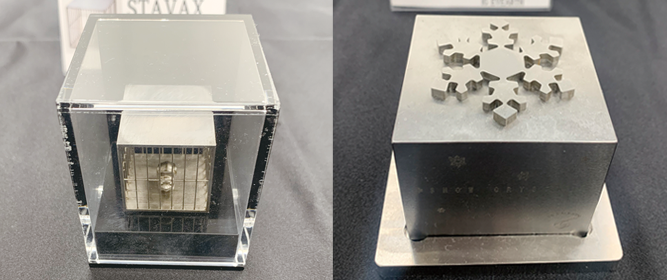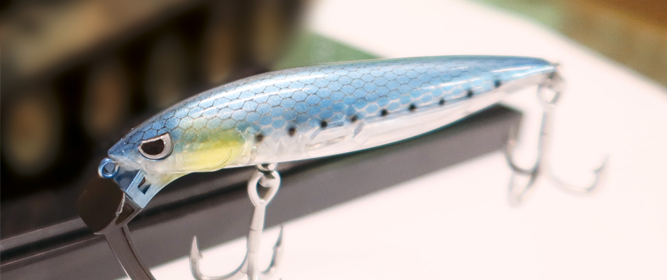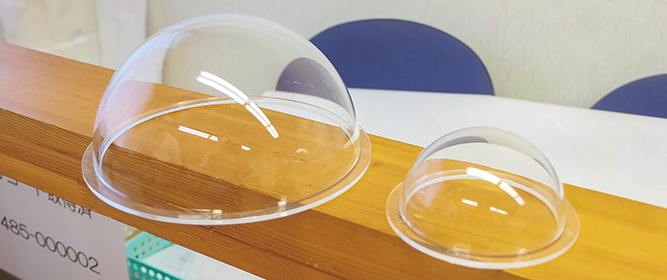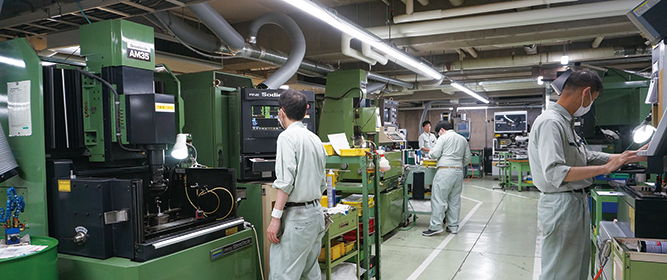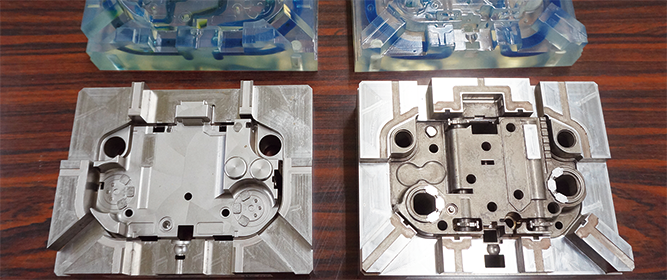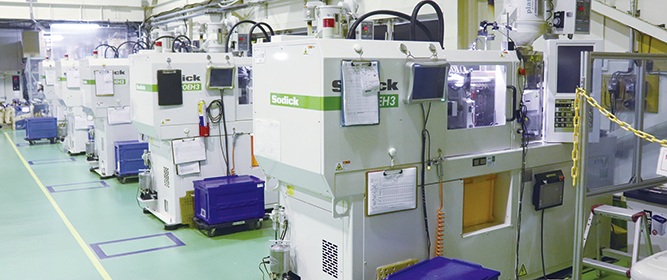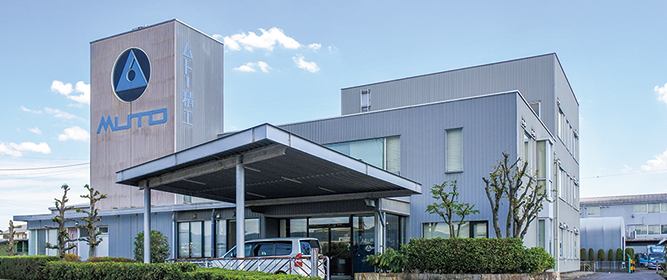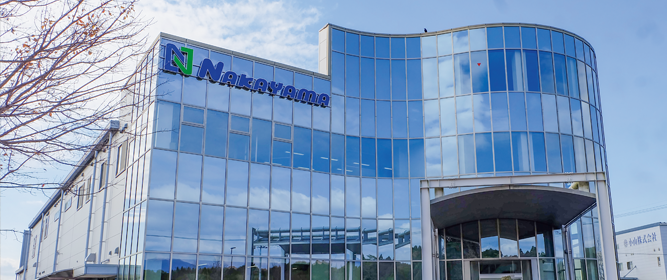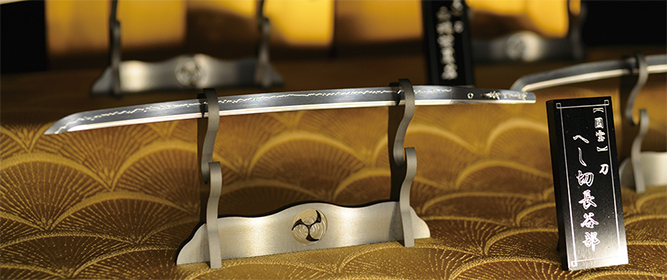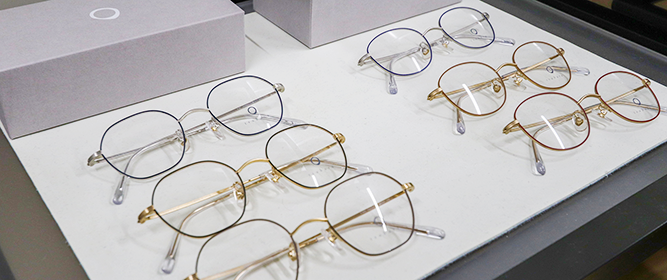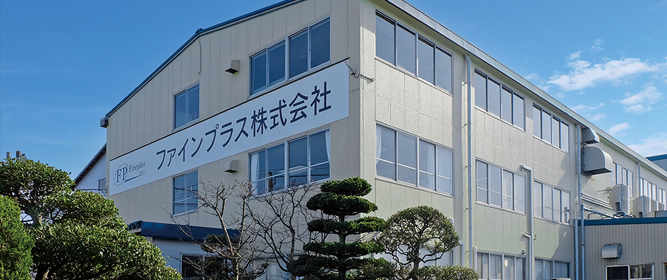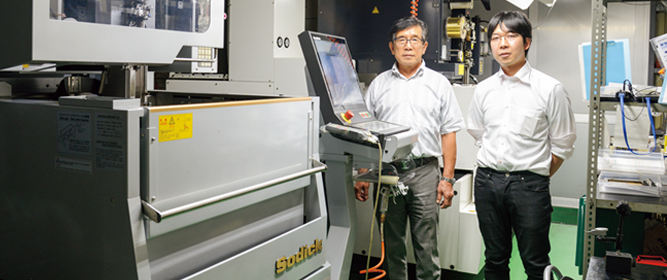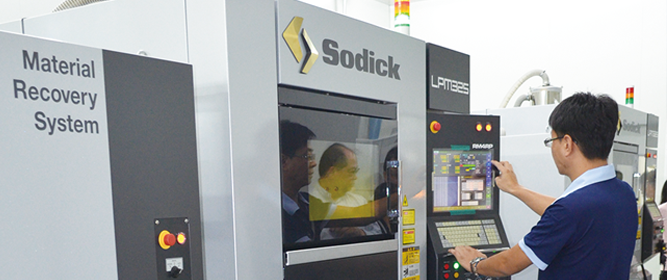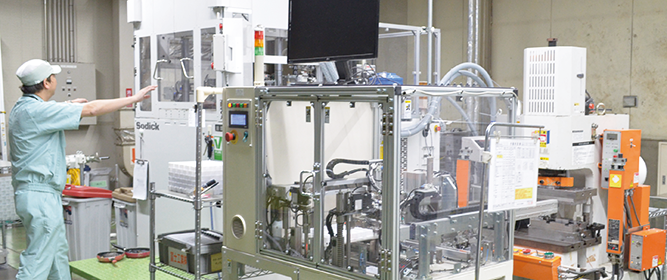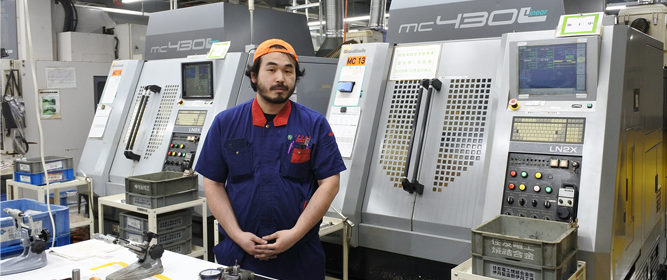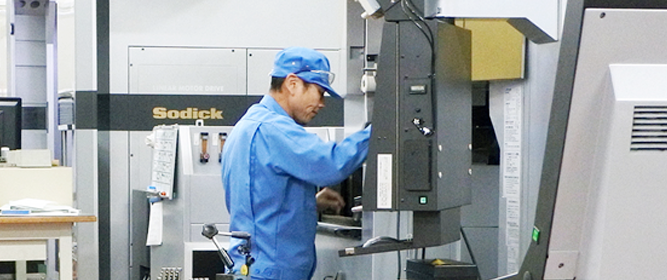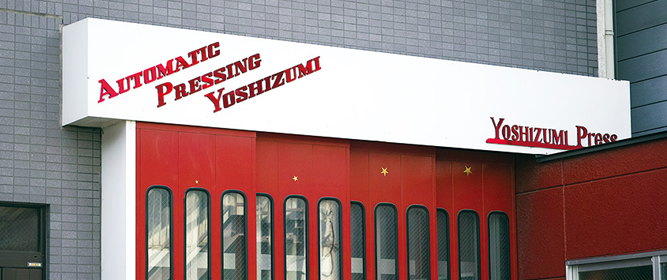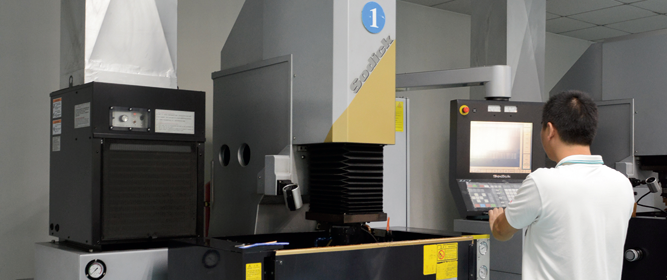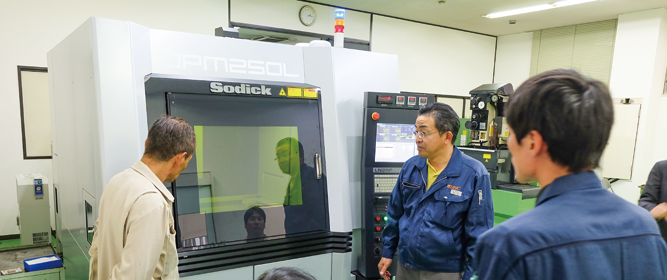Interview【Sodick User Report】 Kobe-shi, Hyogo
Ifuku Seimitsu Co., Ltd.
Pioneering new business opportunities in the airline and healthcare industries
Advancing technology in precision metal 3D printers
Raising industry standards and boosting corporate value
by leading the industry in the accumulation of technology and know-how
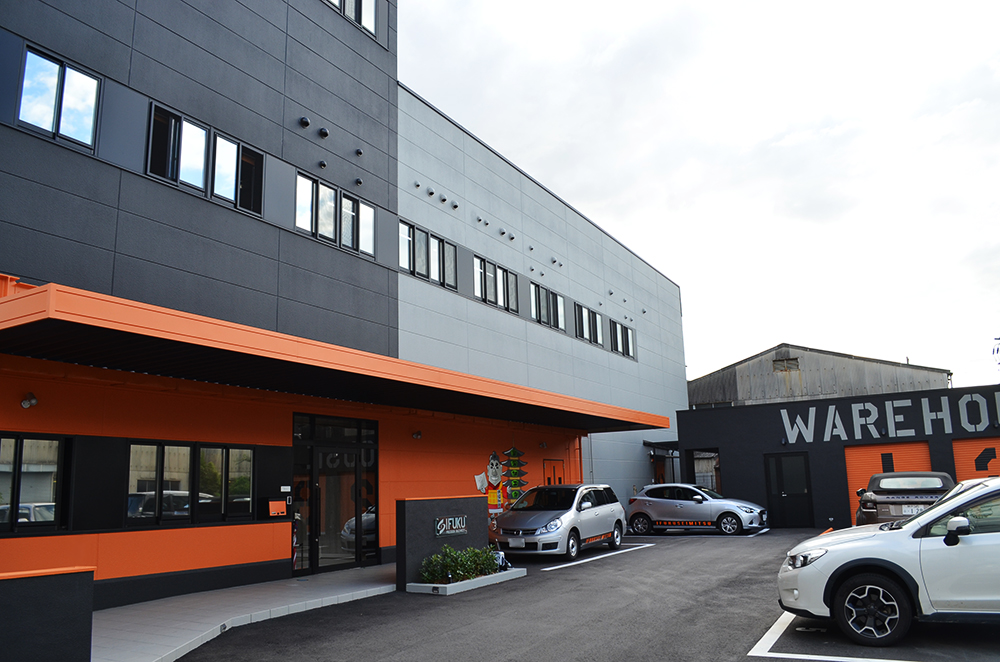 The new head plant completed in August 2017
The new head plant completed in August 2017
An early focus on wire-cut electrical discharge machines with continual technological improvements helped forge a formidable source of strength
Headquarted in Kobe, Ifuku Seimitsu fully entered the metal 3D printing business in February 2017 using the Sodick-produced precision metal 3D printer, ‘OPM250L’. Ifuku Seimitsu aims to establish a moldless manufacturing process combining 3D molding technologies and metal cutting technologies in an aim to make inroads in new markets, such as aircraft manufacturing and advanced healthcare. The company will look to building a small lot production system for automobile parts and a mass production system for aircraft parts by FY2022.
The company was first founded in 1970 as ‘Ifuku Kosakujo’ by the father of the current President Motohiko Ifuku, Tamotsu Ifuku. Since then, the company has aggressively pursued and introduced new metal processing technologies.
President Ifuku reflect on these early days, “At the time Kobe had developed on the back of smokestack industries. Long-established companies had long since cornered the market, and my father had a hard time winning any work contracts immediately after branching out on his own. He first made inroads in capturing new clients by actively taking on difficult work contracts that required the machining of hard metals. One example of this is the development of a proprietary technology used for turning casting die ejector pins.”
Soon after the company saw the potential of wire-cut EDMs, being one of the first to introduce this form of processing in Hyogo Prefecture. Since then, the company has built on its technical capabilities in this field, with high-precision wirecut EDMs remaining one of the company’s core strengths even today.
In addition to wire-cut EDMs, today Ifuku Seimitsu is involved in everything from the prototyping to the mass production of precision parts for automobiles, aircraft and semiconductors using die sinker EDMs, machining centers and cutters. Years of working with automobile manufacturers has helped refine the company’s cutting and measuring technologies, earning the company a reputation for the high level of precision it achieves in its ultra-micro, ultra-fine processing works.
“We have systems in place to ensure that we deliver the highest level of quality in all metal processing operations, enhancing our reputation as a ‘one-stop shop for all things metal processing’.” (President Ifuku)
 Source: Ifuku Seimitsu Co., Ltd.
Source: Ifuku Seimitsu Co., Ltd.Rather than boosting overseas production efforts, Ifuku Seimitsu looks to expand overseas while maintaining a base in Japan
In its long-term roadmap plotting a course for the company up to 2036, the company has identified three core pillars vital to propping up the business - developing precision processing and 3D molding businesses as core business operations, and expanding the global arm of the business. Currently, the company has a production subsidiary in Jiangsu Province, China, and a sales branch in Amsterdam, Holland. With investments in the Chinese production subsidiary totaling around 200 million yen, the company plans to triple the production capacity of the site by FY2020, However, the company does not have any plans for further expansion or capital investment in overseas production sites for the future.
“When all is said and done, we are a company focused on the Japanese market first and foremost, and we see our headquarters in Japan as the based for any global expansion,” explains President Ifuku.
The main reason for positioning the production subsidiary in China is due to the importance of capturing the Shanghai market for further global expansion. Establishing a presence in Shanghai allows Ifuku Seimitsu to establish relationships with leading European buyers not seen in Japan.
If anything, it is the company’s domestic plants that are the main targets of aggressive capital investments. In August 2017 construction finished on a new head plant costing some 600 million yen. This consolidated prototyping activities,which had been the previous focus of the head plant, with the mass production-focused second plant. While two metal 3D printers are already in operation, Ifuku Seimitsu is considering plans to add a further four by 2020.
While maintaining the company’s high technical capabilities and quality levels, the company is looking at further automation and labor saving opportunities in order to face pricing competition on an international scale. By the end of 2018 the company plans to introduce a fully automated system where two large-scale robots perform all processes using a setup featuring six machining centers. Plans are also underway to implement a similar setup using large-scale robots on wire-cut electrical discharge lines in the following fiscal year. An automated wire-cut electrical discharge plant is an extremely rare sight, even within the manufacturing industry.
 Sodick-produced machining centers side by side
Sodick-produced machining centers side by side
In addition to these automation and labor saving efforts in manufacturing, Ifuku Seimitsu is also increasingly shifting to a paperless approach for office work. All employees carry a tablet. These tablets are used for attendance management and task management between departments, video conferencing between employees, and as a work aid. This streamlining of work tasks also serves as part of the company’s efforts towards work style reform.
While leveraging a 24-hour plant operation approach is nothing new for Ifuku Seimitsu, since the completion of the new plant the company has introduced a staggered working hours system split into three teams. An online system connecting these tablet devices is used to facilitate information sharing between teams, greatly reducing working hours. Large monitors adorn offices with management divisions and work sites, making it possible to determine the state of plant operations at a glance. This not only facilitates contingency measures in the event of an emergency, it also allows for the establishment of IoT-conscious plant facilities.
 Plant management and monitorinng with IoT
Plant management and monitorinng with IoTImplementing Sodick-produced precision 3D-metal printers
Ifuku Seimitsu first turned its attention towards metal 3D printers around 2014. President Ifuku had visited Germany and other overseas locations to gain a better insight into the latest developments in metal additive manufacturing. It was during these trips that he first learned of 3D metal additive manufacturing, and he immediately started preparations toward entering this field. While metal 3D printers open up the potential for moldless manufacturing, this was not the only area that President Ifuku’s hopes were pinned to.
The company maintains a high level of capital efficiency, and is highly rated by financial institutions in terms of financial criteria. One of the main reasons for this is the comparatively low cost of materials compared to total sales. The majority of materials used are parts supplied by customer companies. Materials conforming to customer standards are provided when developing automobile parts, and tablets made of specialized materials are prepared, even when developing prototypes.
On the flipside, the company still felt there was room for improvement. Having a natural disaster, such as the Great East Japan Earthquake or the flooding that occurred in 2018, put a stop to the production and supply of even one component of an automobile part can cause the entire automobile production process to break down. Such events also prevent Ifuku Seimitsu’s plants from operating, causing massive losses.
“If we could find a way to produce products without the supply of materials, we could keep our plants in operation. Metal 3D printing does not rely on a supply of materials. With the introduction of metal 3D printers, we aimed to establish a structure through which we could espouse the benefits of moldless manufacturing”
Having said that, when compared to other facilities with an immediately apparent investment yield and payback period, metal 3D printers are still somewhat of an unknown quantity, which is naturally a cause for hesitation for any investment decision. With this in mind, the company drew on manufacturing subsidies awarded in FY2016 when making the investment.
“We had planned to use subsidy money to enter the printing field around two years earlier, but our application fell through. Back then government administrators were perhaps a little more skeptical of the potential of metal 3D printers. Maybe this marked a change in prevailing opinion of the times”
The Sodick-produced precision metal 3D printer ‘OPM250L’ introduced is mainly used to process automobile parts and aircraft parts using marageing steel as the raw material. While initially there was a gap in understanding between Sodick, who originally envisioned the OPM250L to be used for metal processing, and Ifuku Seimitsu, who were looking to use it for processing finished parts, detailed discussions between the two parties lasting over a year helped bring the potential of this approach into view. While closely sharing data, Sodick joined Ifuku Seimitsu in venturing out into the unknown, and the two companies are working side by side in carving out new market opportunities.
 The Sodick-produced precision metal 3D printer,‘OPM250L’with Representative Director and President Motohiko Ifuku
The Sodick-produced precision metal 3D printer,‘OPM250L’with Representative Director and President Motohiko IfukuPromoting metal 3D printing through increased marketing efforts
While awareness of metal 3D printers is continuing to grow within the metal processing industry, President Ifuku expects that it will take at least another five years until this approach reaches widespread popularity. While 3D printing has not been able to completely unshackle the image that it is some form of ‘magical technology’, looking ahead it is going to need to establish its rightful place as a genuine approach to metal processing alongside other metalworking machines, such as millers, lathes, machining tools and presses. To achieve this we must actively promote metal 3D printing through industry and academic collaborations and other such initiatives. We openly accept inquires from leading European and U.S. manufacturers, and actively partake in the sharing of information on a level not seen at other companies, such as by offering plant tours, and providing advice on how 3D printing can be implemented that is tailored to the company’s operating environment.
“This is a field that is still in the nascent stages of its development with an uncertain future ahead. I feel that the spread and growth of the technology needs to be prioritized over short-term profits. However, should metal 3D printing establish itself as a genuine alternative to conventional metal processing approaches five years from now, our pioneering efforts in research and development, verification experiments undertaken by specialist researchers, employee training and the acquisition of related accreditation should give us a major advantage in establishing a leading position in this field. With this in mind we have no intent to rest on our laurels when it comes to the metal 3D printer business.”
Currently there are no public standards in place concerning 3D printers - JIS standards and DIN standards do not apply. President Ifuku is calling on related bodies and university researchers to introduce standardization in this burgeoning field. He is also actively seeking to collaborate with other players in the field to help this movement swell.
“If possible, I’d like to see manufacturers like Sodick launch 3D printer user groups. While admittedly we are in a competitive relationship, we could both gain a great amount from hearing the opinions of the 3D printer user base. The ties formed between domestic manufacturers in related fields would surely serve as a great source of strength should we ever face full-scale competition from overseas competitors”
In this way, President Ifuku aims to capture new segments of the aircraft parts market, advanced healthcare and other such fields.

Source: Ifuku Seimitsu Co., Ltd.
A finished sample of the ‘Kobe Port Tower’ made using a metal 3D printer

 Representative Director and President Motohiko Ifu
Representative Director and President Motohiko Ifu
- Representative
- Representative Director and President Motohiko Ifuku
- Established
- 1970
- Address
- 750-6 Nishi-no-kuchi, Junna-aza,
Ikawadani-cho, Nishi-ku, Kobe-shi, Hyogo - Tel
- 078-978-6760
- Production Equipment
- [Sodick Products]
Die-sinker EDM 1
Metal 3D Printer 2
High Speed Milling Center 2
[Others] NC lathe, etc. - Affliated companies
- ・Kun Shan Ifuku Precision Machinery Co., Ltd.
Address:
900 Jinmao Road, Zhoushi Town, Kunshan City, Jiangsu, CHINA
TEL:86-512-57880129
FAX:86-512-36830828
・Hong Kong Ifuku Seimitsu Co., Ltd.
・Taisho Kinzoku Kogyo Co., Ltd. - URL
- http://www.ifukuseimitsu.com/(WEB SITE)







